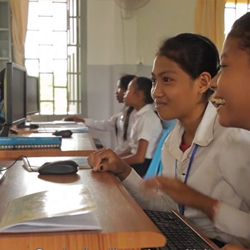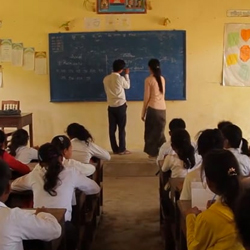The School Dropout Prevention Pilot program was designed, implemented, and assessed interventions in four countries, including Cambodia. It was funded by the U.S. Agency for International Development.
The pilot focused on six Cambodian provinces with some of the highest dropout rates in the country. It focused on students in seventh, eighth, and ninth grades, when dropout rates spiked most acutely. For example, an analysis by the School Dropout Prevention Pilot revealed that more than three-quarters of the at-risk students and dropouts in Cambodia missed or left school to supplement household income.
The pilot created an Early Warning System that drew on school data to identify at-risk students. Schools received training on how to address the needs of these students, while engaging their parents in a prevention program. This encouraged attendance and performance, as well as improved parents’ understanding of the value of school and ways to support their children.
Some target schools also received a low-cost solar-powered computer lab and computer literacy training, which increased students’ interest and enthusiasm in schooling and emphasized the relevancy of their education to future employability.
The project worked in 215 schools and reached nearly 60,000 students. School community members paid 15,096 home visits, and more than 17,000 people attended community meetings about mitigating dropout.


